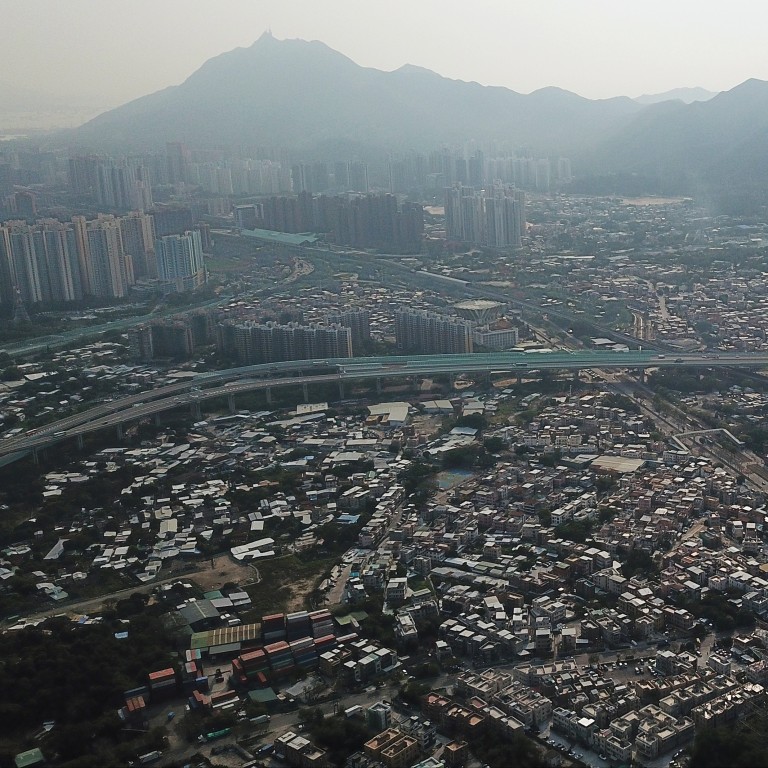
How a population shift driven by the Greater Bay Area plan will transform Hong Kong’s commercial and residential property landscape
- There is a growing importance for projects that leverage transport connectivity with critical areas in the bay area zone, in terms of flows of business, capital and talent, says Andrew Ness of Colliers International
- North Lantau, where the government’s ‘aerotropolis’ initiative is centred around the airport, has already seen a spike in business activity
Every indication suggests we are going to see a marked population shift away from Hong Kong’s traditional urban core. Specifically, this will be towards the North and North Western New Territories – places where, until the 1970s, the major occupations were rice cultivation and raising ducks.
According to the Census and Statistics Department’s 2014-2024 population projections, Tuen Mun will increase by 11.8 per cent, Yuen Long by 14 per cent, and the North District by 22.8 per cent. Lantau alone will be home to more than 24.5 per cent more residents in the next five years.
This mirrors the growing importance of projects that leverage transportation connectivity with critical areas in the Greater Bay Area, in terms of flows of business, capital, technology, know-how and talent.
This is good news for Hong Kong overall. But which areas will be the biggest winners?
One will undoubtedly be North Lantau. The government’s “aerotropolis” initiative, centred around Hong Kong International Airport, is causing a spike in business activity. It has already triggered the launching of projects to extend the existing Tung Chung Town Centre to accommodate new commercial, residential, hospitality and community facilities.
In addition, the planned future Siu Ho Wan MTR Station will drive the development of another complementary residential area and the ensemble will further drive expansion of tourism and hospitality facilities in Sunny Bay.
The North Lantau development strip will be buttressed further by a proposed new South West Tsing Yi Bridge to facilitate traffic from the North Western New Territories. This, in turn, will necessitate development of a new highway, linking North Lantau more closely with both Kowloon and the New Territories.
Henderson offers 1 million sq ft of Fanling farmland for public homes
Sleepy, semi-residential, semi-industrial Hung Shui Kiu is similarly slated to undergo a profound transformation. On the back of “aerotropolis”, its proximity to the Shenzhen Bay Bridge and future links to the Tuen Mun Western Bypass and Route 11, Hung Shui Kiu has been earmarked as a “new development area”. Completed in phases running up to 2040, this will see the area’s population swell to the size of a small city.
Hung Shui Kiu has plenty in its favour. As well as being the site of a new MTR station on the West Rail Line, it will also be served by a spur line of the future Hong Kong-Shenzhen Western Express Link. These will provide Hung Shui Kiu with unique potential to emerge as a powerful, new centre for bay-area connectivity, and will make it attractive to cross-border enterprises.
This is better news for some businesses than others.
Greater Bay Area is a vision for Hong Kong and Macau to lead China’s modernisation
The tourism, hospitality, retail and leisure sectors will be big beneficiaries. Huge, multi-phased developments, such as the 3.76 million sq ft SkyCity, are positioned to capture the increased passenger flows, but the core “aerotropolis” area isn’t big enough to handle it. In the short-term, this will necessitate the development of substantial commercial and retail property in the nearby Tung Chung East and West.
In the long term, it will drive the Sunny Bay Reclamation project, as well as the development of new leisure attractions, such as Kaleido Park on the Disneyland Phase II site.
Other winners will be logistics services and freight forwarding. The development of the massive Cainiao HKIA Logistics Centre, and the new Goodman facility at Siu Lang Shui in Tuen Mun, will add 4.85 million sq ft of modern logistics handling facilities to the new transportation hub.
After the government releases sites 40 and 46, which have been proposed for development into a port economic zone, they will be conveniently accessible to Tuen Mun – Chek Lap Kok Link, providing direct connection to HKIA. This surge in modern green industry and logistics will also necessitate the development of more office facilities, in Lantau North, and Hong Shui Kiu as well.
Growth in the number of people directly employed by businesses operating within the expanded airport area will further drive up the requirements for public and private housing, and ancillary support facilities in Butterfly Bay, Tuen Mun Town Centre and So Kwun Wat. It also provides direct support for the large-scale public and private housing projects presently under phased development in the area near Siu Hong MTR station.
This previously rural world began changing in the 1970s, with the launch of the new town development programme. Now, with the emergence of the Greater Bay Area, it is metamorphosing into a transport and logistics powerhouse, and transforming Hong Kong’s commercial and residential property landscape.
Andrew Ness is senior consultant, strategic market intelligence, at Colliers International (Hong Kong)

